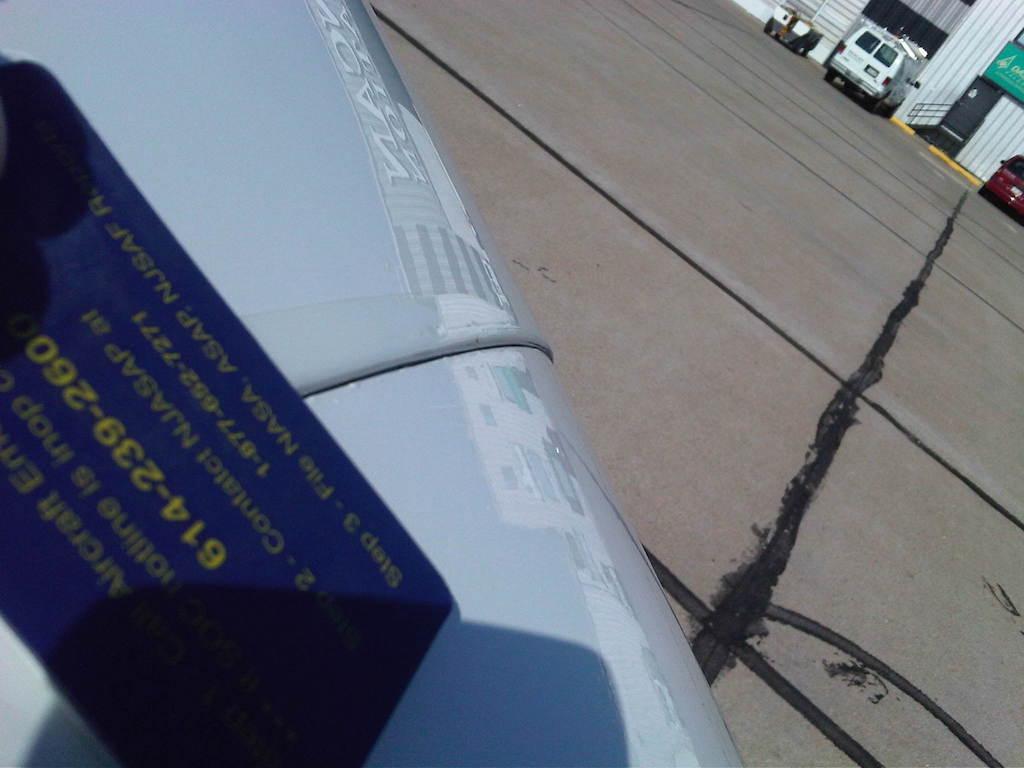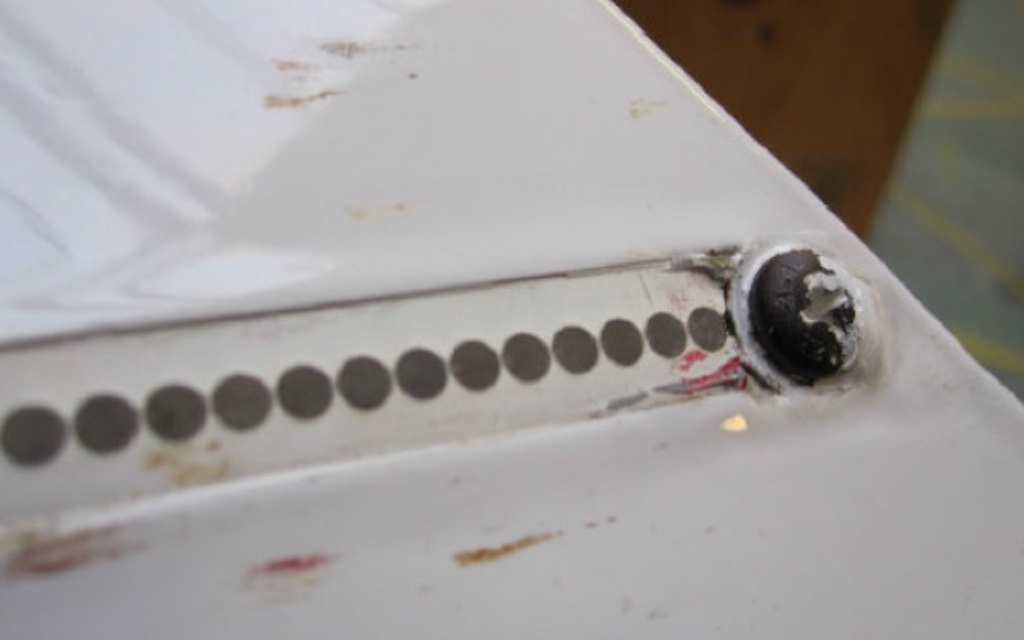
Notice the very small difference in the intersection with the aircraft’s radome. This seemingly small difference that would likely go undetected on a normal preflight allowed the airstream to force its way through the imperfect seal.
The performance of a radome is characterized by multiple parameters. One of the most important, which applies to both civilian and military aircraft, is transmission efficiency.
Transmission efficiency is the percentage of microwave energy that passes through a radome, typically measured over various angular regions that usually represent the area of the radome actually used by the radar system. While ideally “transparent,” all radomes will have losses as the RF signal passes through them due to a combination of reflections, diffraction, absorption, refraction and depolarization. Closely related to this characteristic is reflectivity, in which the radar’s signature is bounced back to the radar dish by the radome.
The change in the direction of propagation of the radar signal as it passes through the radome is called “beam deflection.” This is particularly important when tracking a fast moving target or terrain avoidance for a low flying, fast moving aircraft. Even very small angular errors introduced by the radome can have significant effects.
Pattern distortion is the change to the radar antenna radiation pattern caused by the presence of the protective radome. A radome can change the radar antenna’s signal to include its beam width, side lobe levels, peak/null location, lobe imbalance and null fill.
Preflight Inspection

Lightning protection is critically important for the long-term durability of an aircraft radome, especially since composite components cannot handle the high current and heat generated by lightning. During a preflight inspection these must be in good condition. During both pre- and post-flight inspections check for any signs of a “short” or disbonding of the strips from the radome.
According to the NASA publication, “Lighting Protection of Aircraft,” protection is afforded by the application of lightning diverter strips along the outer surface of the radome that are designed to attract the lightning bolt rather than the radome itself. The electricity is then safely diverted onto the skin of the airplane, and finally back into the air to the ground.
Lightning protection strips can be a series of closely spaced buttons of conductive material affixed to a plastic strip that is bonded adhesively to the radome. This forces the lightning to “jump” from segment to segment through the gaps. The strips are sized and spaced carefully according to simulated lightning attachment tests; at the same time, they do not significantly interfere with the radar and remain thin and aerodynamic.
Radomes needed to be tightly attached to each aircraft. A team of aviation maintenance technicians at Duncan Aviation in Lincoln, Nebraska, pointed this out during an assignment to do a post-maintenance check flight on a Cessna Citation Encore. Damage to the original radome necessitated the temporary utilization of a replacement radome. The technicians at the facility attempted to find a replacement radome that would fit as well as possible.
A quick preflight would have afforded scant notice of the seemingly minor alignment of the replacement radome with the fuselage by barely the width of a credit card. However, during the post-maintenance test flight this miniscule vacancy allowed high pressure air to enter the interior of the radome. We experienced unwanted vibrations, noise and erratic airspeed indications while accelerating through 200 kts.
A radome’s exterior surface is critical. Check for any cracks in the paint. Seemingly miniscule cracks in the paint will allow moisture to enter the interior. These must be brought to the attention of your maintenance team so it can check for unseen interior damage.
Tap testing is widely used as a quick method to detect the presence of delamination in thinner composite materials. The aviation maintenance technician will lightly tap on the surface with a lightweight hammer, or even a coin. The AMT will compare the acoustic signature from surrounding areas. Any area providing a “dead” response is an area of concern. On honeycomb structures, such as radomes, both sides of the fiberglass laminate skin would need to be tested.
Returning Radome to Original Condition
Normal use of aircraft will subject radomes to conditions that will likely affect its performance over time. If a repair adds or replaces skin plies, electrical testing must be performed using the techniques and procedures of the Aircraft Technical Committee report ARTC-4, “Electrical Test Procedure for Radomes and Radome Material.” Additional radome test requirements are called out by DO-213, “Minimal Operational Performance Standards for Nose-Mounted Radomes.” This specification was originally developed by RTCA in response to the development of predictive windshear weather radar systems. This document specifies the tests to perform on both new and repaired commercial radomes.
All repairs to radomes, no matter how minor, should return the radome to its original or properly altered conditions, both electrically and physically. Even something as seemingly minor as too many coats of paint, paint layers that are too thick or sprayed with uneven thickness, or metallic base paint can affect a radar’s transmissivity (the ability of radar signals to pass through the radome), as well as causing unwanted radar signal reflections and bending of the radar waves as they pass through the structure. The result can be loss of radar signal, distortion and displacement of targets, and unwanted clutter on the display.
The FAA’s AC 43-14 advisory circular concludes with the warning that these properties are carefully controlled during manufacture and should not be altered by improper repairs.
Know Your Radome, An Important Structure, Part 1: https://aviationweek.com/business-aviation/safety-ops-regulation/know-y…
Know Your Radome, An Important Structure, Part 2: https://aviationweek.com/business-aviation/safety-ops-regulation/know-y…




